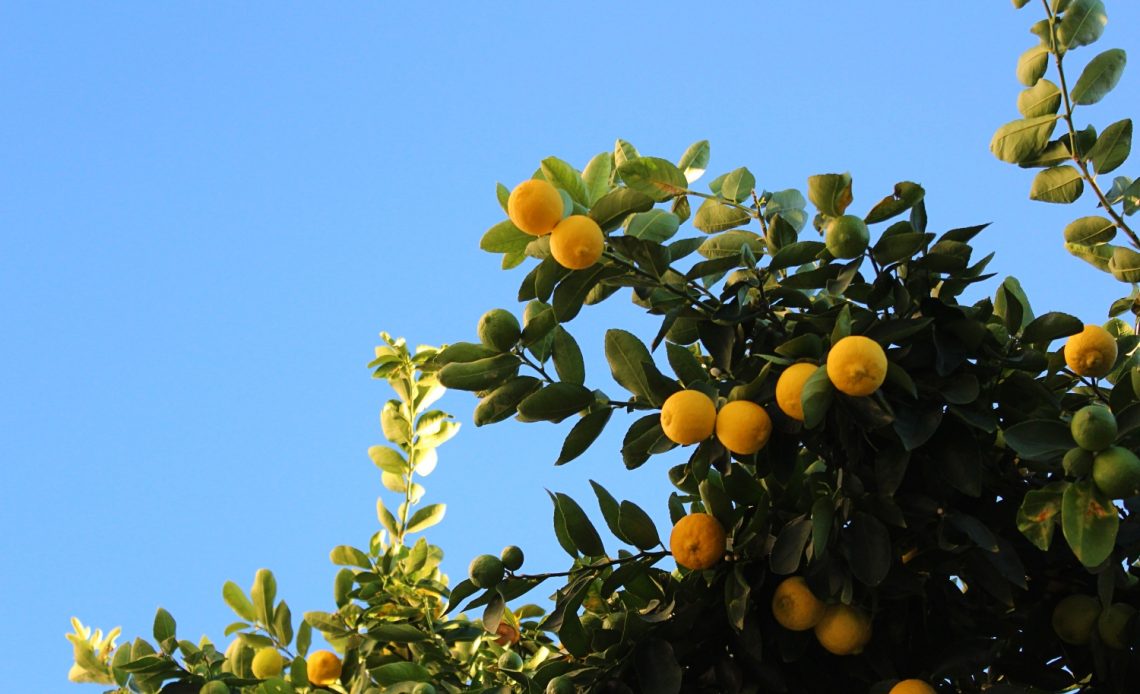

We’re here to help! Wild Yards is a completely free website that is 100% dedicated to helping you create a wildlife-friendly, sustainable yard. Read more
WildYards is reader-supported. When you buy a product through a link on our site, we may earn a comission. Every product is independently selected by our (obsessive) editors and our reviews are unbiased and objective. Read more about our mission or our privacy policy.
If you’re new to growing fruit trees, lemon trees are a wonderful way to test the waters. You don’t have to give these easygoing trees much care to get plenty to harvest. And thanks to small varieties, like the dwarf Myer lemon, you can grow a lemon tree even if the only space you have is a tiny apartment balcony. But, as simple as they are to grow, lemon trees come with their own set of potential problems, just like any other plant. It’s not uncommon to see lemon tree leaves curling and turning yellow or brown. But what causes this, and, more importantly, what can you do to help?
It’s not uncommon for lemon tree leaves to curl in response to extreme temperatures, underwatering, overwatering, fungal diseases, and pests. Other factors can contribute to this problem, as well, such as nutritional deficiencies. Fortunately, foliage can return to normal once underlying issues are addressed.
8 Reasons your lemon tree leaves are curling, plus solutions that actually work
If your lemon tree’s leaves are curling, don’t panic. The underlying cause is probably an easy fix. But, in order to solve the problem, you first must identify the underlying cause, and that’s the tricky part. Here are 8 of the most common reasons why lemon tree leaves curl, plus solutions that will actually help so you can restore your lemon tree to good health.
The problem: underwatering
The most common reason why your lemon tree leaves are curling is that the plant is thirsty. While lemon trees are somewhat drought-tolerant, they prefer their soil to stay moist — not too damp, but certainly not too dry. If your lemon tree’s soil has dried out, either because of a seasonal drought or simply because you haven’t watered it in a while, that’s probably why its leaves have started to wilt and curl. Check the soil by sticking your finger 3 inches into it. Does the soil feel adequately moist, or does it feel dry and powdery? If the soil is dusty, then your lemon tree could benefit from a good drink.
The solution: water the lemon tree more often
Lemon trees need to be watered at least twice a week. A few good, deep waterings are much better than small, frequent drinks. Of course, this is just a rule of thumb. If your region is particularly dry and arid, or if your lemon tree is potted and the soil dries out quickly because of that, then you’ll need to water it more often. Check your lemon tree’s soil every other day, and give the plant a good drink anytime the soil feels dry. Once the tree has settled into a regular watering schedule, its foliage will improve quickly.
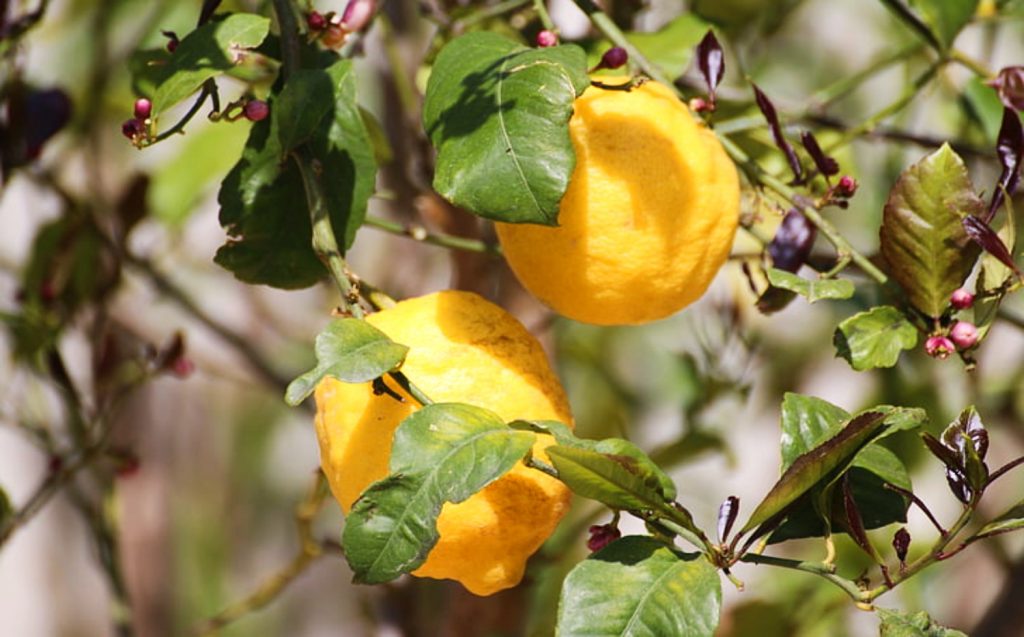
The problem: overwatering
Lemon trees grow best in soil that stays moist. But if that soil becomes waterlogged, either because of excessive rainfall/watering or because the soil itself doesn’t drain very well, that can also lead to curled leaves. When their soil becomes saturated with water, that leaves very little, if any, pore space for air to penetrate. If the roots can’t breathe, the plant has no choice but to drop a few leaves in order to conserve energy and survive. Check the soil with your finger. If it feels soggy, or if the soil oozes water when you press it, like a wet sponge, then the tree has been overwatered.
The solution: scale back on watering
If your lemon tree’s leaves are curling because the plant’s soil is too wet, then turn off the hose. Allow the soil to dry out thoroughly and give the tree a chance to breathe. If the soil is especially muddy, then you may need to amend it with some pea gravel or coarse sand. For trees growing in the ground, digging a ditch nearby will help prevent water from pooling around the base of the tree. For potted trees, be sure to drill holes in the bottom and amend the soil if necessary to help excess water escape. Once the tree’s soil dries out, the leaves will stop curling.
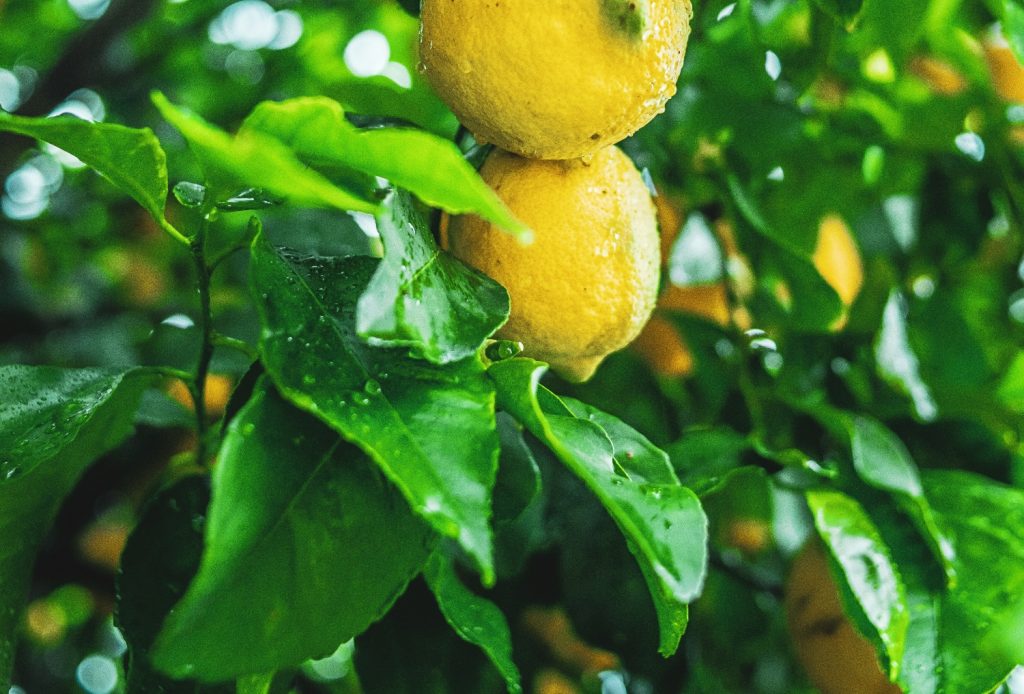
The problem: insect infestations
Ask any gardener and they’ll tell you that bugs can be a major pain in the neck. Sure, ladybugs and lacewings may be good guys. But aphids, spider mites, moths, and leafminers can do some serious damage to your lemon tree. Some of these insects damage leaves by sucking sap, as in the aphid’s case, while others damage them by eating the leaf tissue, as in the leafminer’s case. Left unchecked, these insects can do so much harm that the lemon tree’s leaves curl, turn yellow, and die. If your lemon tree leaves are curling, take a closer look. Do you see tiny bugs creeping along the undersides of the leaves, or white trails zigzagging along the surface? Those are signs that bugs are the culprits behind your lemon tree’s worsening foliage.
The solution: apply an insecticide
If your lemon tree is only playing host to a few bugs, then you can easily pick them off by hand, or spray them off with a garden hose and sprayer attachment set to “jet”. But if your lemon tree’s infestation is moderate to severe, then you’ll need to apply an insecticide. Commercial insecticides are available at garden centers and nurseries. But, if you’d rather take an organic route, then use one of our homemade insecticide recipes, instead. These natural bug repellents kill damaging insects and their potent fragrances keep potential invaders at bay. Once your lemon tree overcomes its bug problem, its new growth will appear green and healthy.
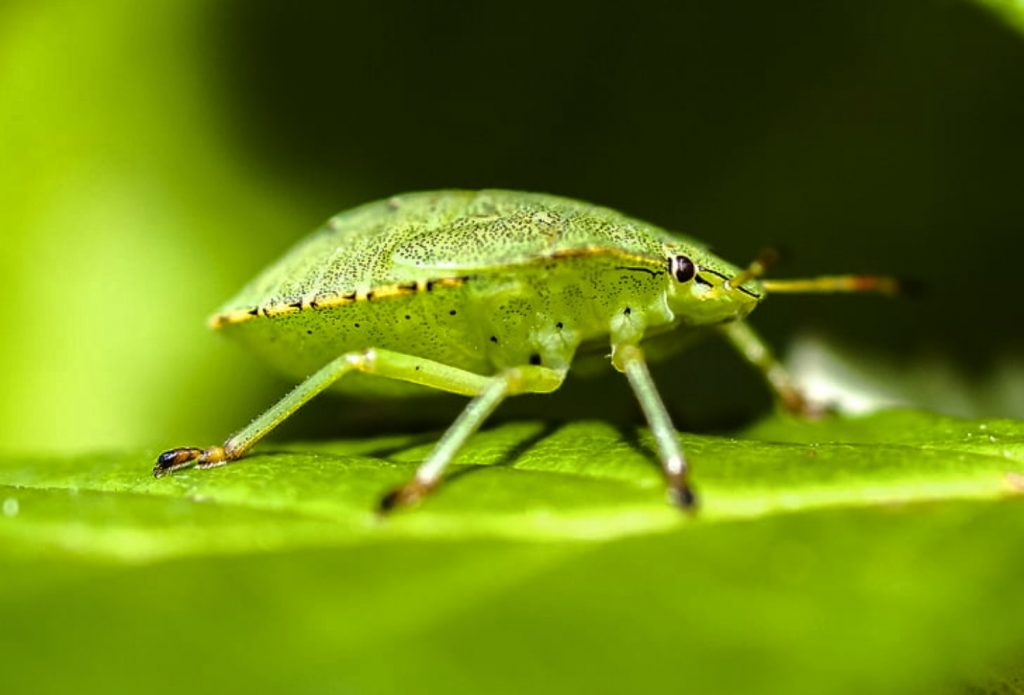
The problem: diseases
If, in addition to curling, your lemon tree’s leaves have become distorted, misshapen, and discolored, those are all signs of an underlying disease. Use the following table to determine which disease your lemon tree is suffering from.
| Disease: | Symptoms: |
| Botrytis blight (Botrytis cinerea) | A gray mold that develops in humid conditions. Causes distorted curled leaves. As the disease progresses, the plant loses leaves and flower buds. |
| Citrus canker (Xanthomonas citri) | Characterized by raised lesions on both sides of the tree’s leaves, giving them a cratered appearance. Lesions are surrounded by a yellow ring. The leaves may curl and drop. |
| Citrus blast (Colletotrichum acutatum) | Causes lemon tree leaves to curl, turn yellow and brown, and die off. Whole branches may die back, cankers develop on bark, and amber-colored resin appears, which smells like sweet syrup. Bacterial blast often occurs in spring. |
Identifying which disease your lemon tree is suffering from is half the battle. Treating the disease is a whole other issue. But it’s one that’s necessary if you want your tree to improve.
The solution: supportive care
How you treat your sick tree depends on which disease it’s suffering from. Start by ensuring your plant’s basic needs are met. This will help keep the tree healthy, so it can fight infections on its own. Improve drainage, ensure ideal light and soil conditions, and increase air circulation. These measures will work to restore the tree’s health. For additional treatment, consult the following chart.
| Disease: | Treatment: |
| Botrytis blight | Prune infected portions of the plant. Pick up dead flower heads, leaves, and stems that collect at the base of the plant to keep the area sanitary. Fertilize plants annually to promote health. Apply a fungicide to prevent the disease from spreading. |
| Citrus canker | Prune infected portions of the plant. Pick up dead flower heads, leaves, and stems that collect at the base of the plant to keep the area sanitary. Apply copper-based fungicides to the plant to protect new growth. |
| Bacterial blast | Prune infected portions of the plant. Pick up dead flower heads, leaves, and stems that collect at the base of the plant to keep the area sanitary. Apply a fungicide to the plant to protect new growth. |
It’s worth noting that if your lemon tree is heavily infected, then your best bet is to uproot the tree and purchase a new one. If you do remove an infected lemon tree, avoid planting any citrus trees in the same area/container/soil so they don’t become infected, too.
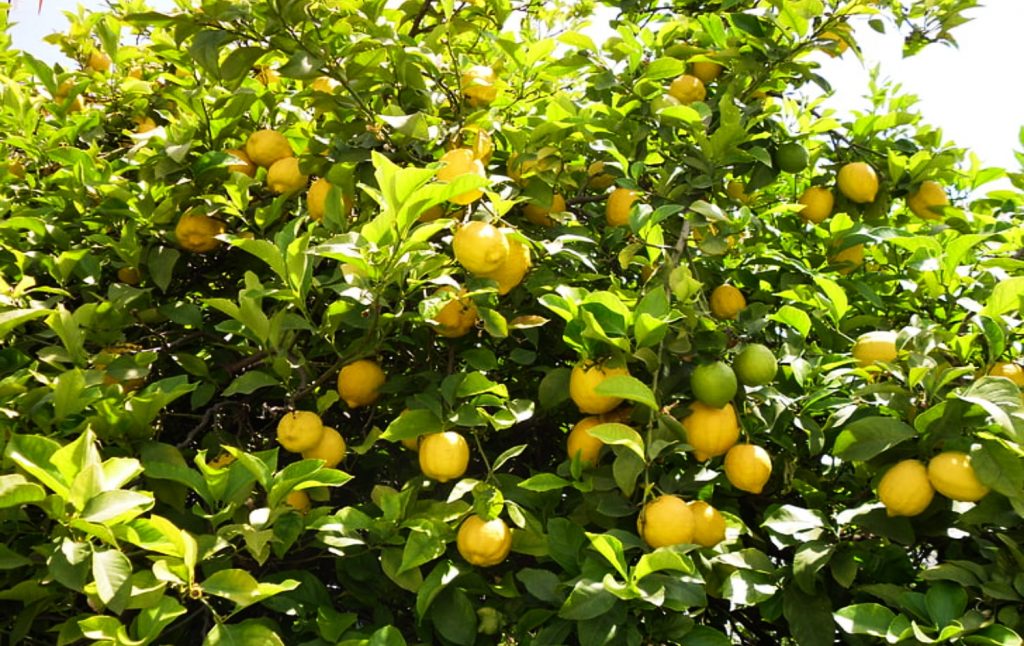
The problem: too much sunlight
Lemon trees grow best in full sun, that is, when they can receive 6 to 8 hours of unfiltered sunlight every day. Of course, this rule is subject to change. If you live in an especially hot climate, 8 hours of sunlight may be too much for the plant. You may notice the plant’s leaves wilting more often or becoming permanently curled. It may also seem like no matter how often you water the plant, it’s never enough. Keep an eye on your lemon tree throughout the day. If you notice it never gets any shade, there’s a good chance it’s baking because it’s getting too much sun.
The solution: give the lemon tree more shade
If your lemon tree’s leaves are curling due to excess sunlight, it’s time to move the plant. Small to medium-sized potted plants are easy enough to protect. Simply move them up onto your porch during the hottest part of the day. For large potted lemon trees and trees that are growing in the ground, the process becomes more difficult. You’ll need to transplant or use a hand truck to move the plant to a shadier location. But, once the lemon tree is getting enough shade, it will cool down and its foliage will return to normal.
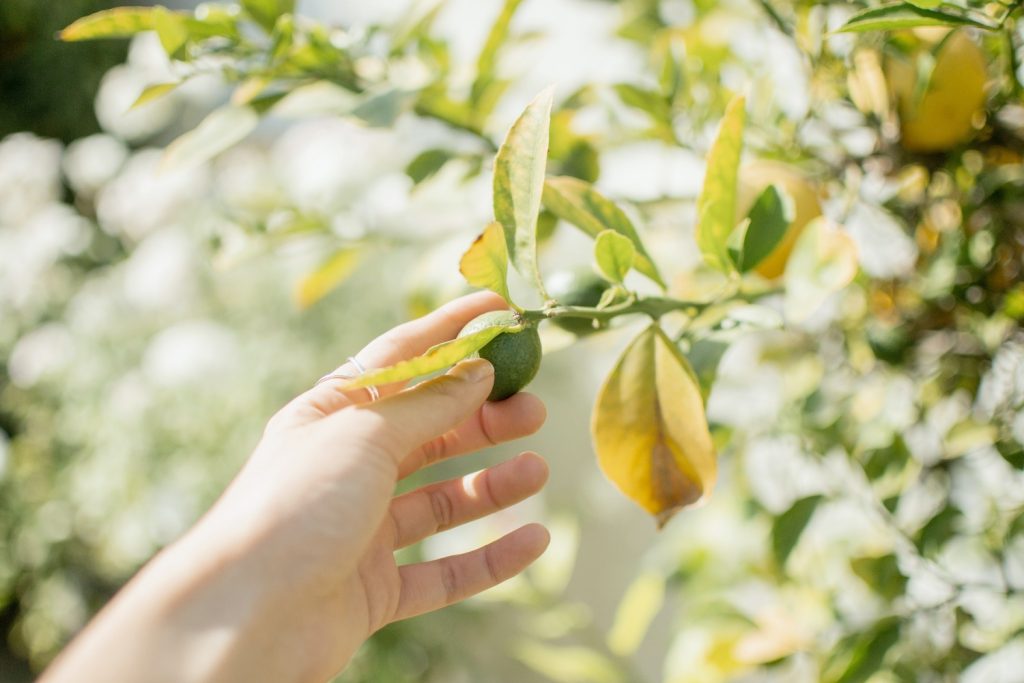
The problem: insufficient sunlight
As previously stated, lemon trees like a lot of sunlight. In most cases, the more sun you give a lemon tree, the better. If you live in a temperate region, your lemon tree will benefit from 8 hours of sunlight. And, if it doesn’t get enough, its leaves may curl and become limp and lifeless. Once again, you’ll need to keep an eye on your lemon tree for a day to see how much sunlight it gets where it’s currently planted. If the tree stays in the shade for 6 or more hours a day, it needs much more sun than it’s getting.
The solution: move the lemon tree to a sunnier location
If your lemon tree isn’t getting enough sunlight where it’s currently planted, you’ll need to transplant it to a sunnier spot. Follow our step-by-step guide for transplanting to maximize your tree’s chances of surviving the move. Be sure to dig a hole that’s twice as deep and as wide as the tree’s roots, and water the plant thoroughly after digging. Keeping the tree well-watered for the first three weeks after transplanting is critical for its survival. For potted plants, simply move them to a sunnier spot on your patio or deck. Once the tree gets enough sunlight, it will finally be able to photosynthesize properly, and its leaves will return to normal.
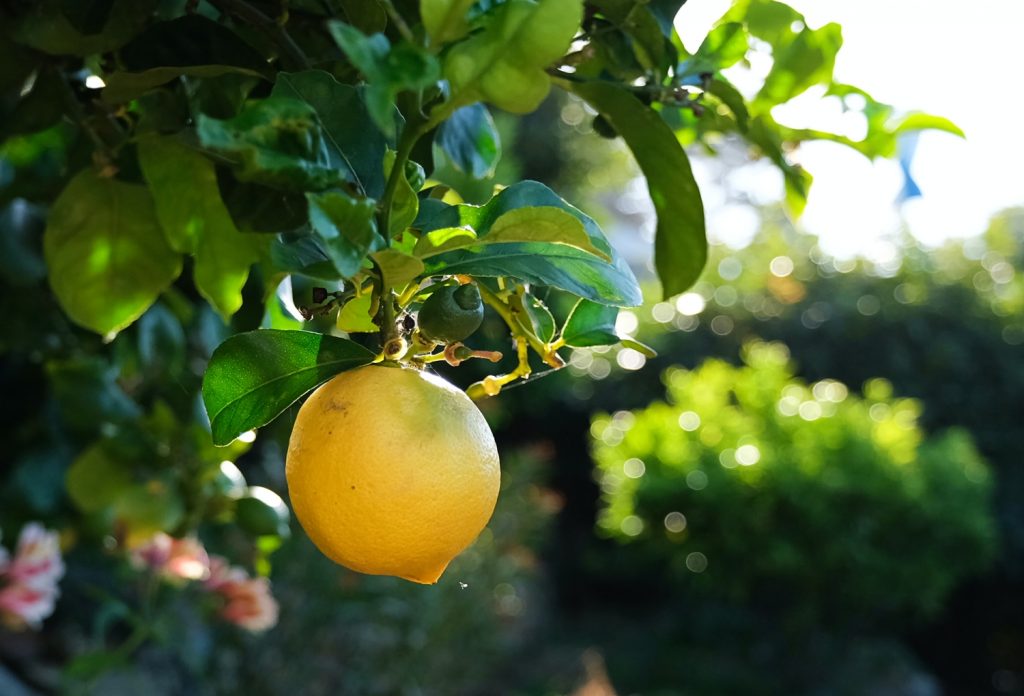
The problem: nutritional deficiencies
Flowering and fruiting plants tend to use up more nutrients than non-flowering, non-fruiting ones. If you notice the leaves of your lemon tree curling and turning yellow or brown during its flowering or fruiting period, then it’s probably suffering from one of the following nutritional deficiencies.
- Magnesium deficiency — essential for enzyme production, magnesium assists in multiple processes, including photosynthesis.
- Potassium deficiency — potassium helps plants with moisture regulation. Without it, plants become less drought-tolerant.
- Copper deficiency — this mineral assists in the formation of cell walls, and acts as a natural antifungal in plants.
- Molybdenum deficiency — molybdenum plays an important role in nitrogen metabolism, helping plants stay green, and supporting healthy growth.
All of these nutrient imbalances can cause a lemon tree’s leaves to curl and the edges to turn brown. This makes it impossible to determine which minerals your lemon tree is deficient in just by looking at the plant.
The solution: add the missing minerals
Once you’ve tested your soil and you know which minerals your lemon tree is deficient in, it’s time to add those nutrients back into the soil. You can purchase each of these minerals separately to amend your soil, and this certainly makes the whole process easier. However, you can also use natural amendments, including compost, to correct the imbalances.
- Magnesium deficiency — add two tablespoons of Epsom salts to a gallon of water, and use the solution to water your lemon tree.
- Potassium deficiency — banana peels, wood ash, and compost are all excellent sources of potassium that will raise levels in the soil quickly.
- Copper deficiency — animal manure is the most readily available natural source of copper. It’s also a great source of nitrogen and phosphorus.
- Molybdenum deficiency — sandy soils are naturally deficient in molybdenum. Use seaweed meal to build levels back up and promote healthy foliage production.
It’s worth noting that it’s not uncommon for lemon trees to be suffering from more than one mineral deficiency at a time. That’s why it’s critical that you test the soil before you amend it. This is the only way to know which minerals are missing so you can correct the imbalances. Once your lemon tree has all of the nutrients it needs, new healthy leaves should emerge in just a few weeks’ time.
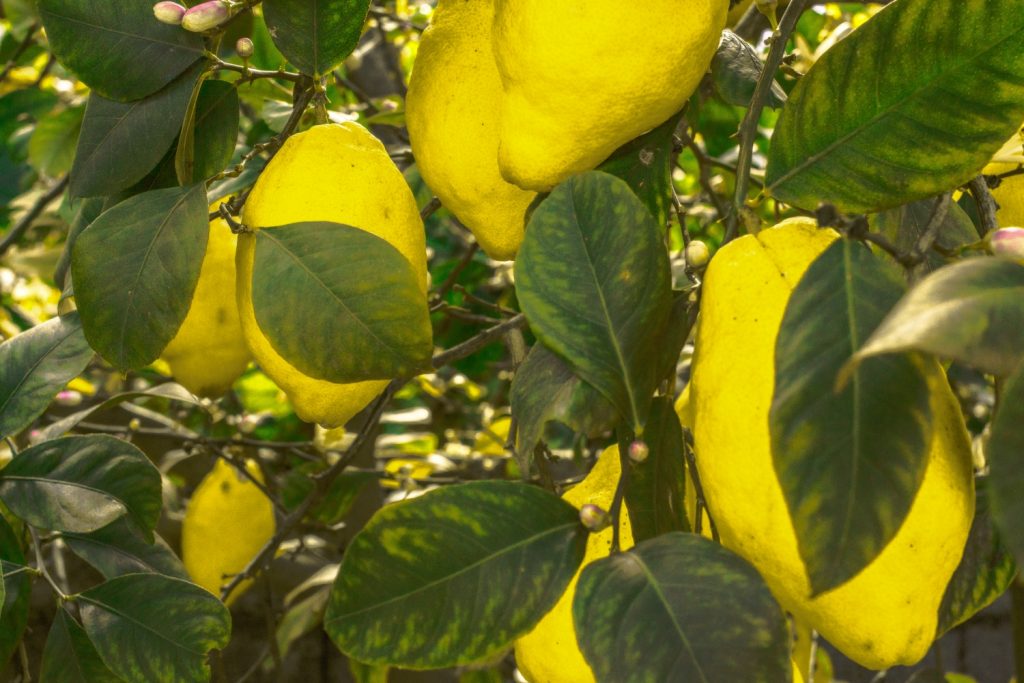
The problem: wrong soil type
Lemon trees don’t require much in the way of extra attention. Set it and forget it, that’s a lemon tree for you. But when you go to “set it” you’ve got to make sure you do it right. If your lemon tree starts off on the wrong foot, its condition and performance will both suffer. Examine the soil your lemon tree is planted in. Is it sandy to loamy with lots of decaying organic materials to hold onto moisture and aerate the soil? Or is it compacted, clay-rich, and difficult to root through? And, how about the pH? Is it neutral to acidic, or is it alkaline? Alkaline soils can lead to nutrient deficiencies, and (you guessed it!) curled leaves.
The solution: amend your soil
Knowing your soil’s properties will help you amend it to suit your lemon tree’s needs. So invest in a soil test kit to determine your soil’s pH. Add lime or sulfur to alkaline soils to drop the pH to 6.0 to 7.0, the sweet spot where lemon trees grow best. Use compost, manure, and coarse sand to add beneficial nutrients to the soil, and to improve its texture. These amendments will create a looser, more porous substrate for your lemon tree to root through, allowing air to penetrate and excess water to drain quickly. Once you’ve fixed the soil to your lemon tree’s liking, its leaves will grow out nice and healthy.
Will your lemon tree’s leaves uncurl?
Possibly, yes! If your lemon tree’s leaves curled due to inadequate light conditions, poor soil, or nutrient deficiencies, then once the underlying cause has been identified and corrected, the plant’s curled leaves may straighten back out over time. Unfortunately, if the leaves have curled due to physical damage, such as being gnawed on by pesky bugs, then they may never uncurl.
By taking measures to keep your lemon tree happy from the start, you can prevent curling leaves before they even happen.
